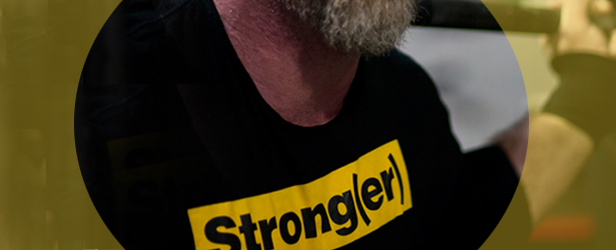
When I first began lifting in the dark ages, before the sport of powerlifting existed, we all enjoyed the bench press. Short or tall, big or small, we all loved it. It was the measuring stick for our strength. What does he bench? Like most gym goers we lied flat on our back and treated the lift as an exercise of the triceps and chest. We did not use our entire body, lats, shoulders, triceps, chest and legs; we didn't know how. Once I started powerlifting and received some coaching, read some articles on elitefts™, saw some videos on elitefts™, I began to realize how important the entire body was to the lift. I realized the importance of the set-up, the big air, the wider grip, the back arch, the lats, and the leg drive. Heretofore, I had only heard the term leg drive used as a cue in the squat.
Now comes my conundrum. How does a giant like Donnie Thompson: six-foot-three, 375 pounds, and me: five-foot-six, 173 pounds, get the proper leg drive on the same bench?
When I train at Donnie Thompson’s, it’s fun to squat—if squatting can be considered fun—because he has a monolift. We spend all the time necessary to adjust the height of the hooks to accommodate my short stature. We also move the hooks as necessary to accommodate my hands and arms. By the time he begins to beat my ass, I'm in as comfortable a position as I can be.
I also compete in a federation that uses a monolift. As most of you know, the height of the hooks is adjusted for each lifter at weigh-ins. The hooks are also moved in or out to accommodate each lifter’s grip. Even in federations that don't use a monolift, accommodations are made. The height of the squat rack is adjusted for each lifter. Also, most squat racks allow for the stanchions to be moved in or out to accommodate everyone’s hand placement. While not as comfortable as a monolift, squat racks at meets attempt to make every lifter as comfortable as possible.
The deadlift, on the other hand, doesn't accommodate any lifter. The bar is on the floor. There it is—pick it up. Tall or short, big or small, it's there for us all. Conventional or sumo—it’s just there. Pick it up.
Now let’s talk about the bench. After all, that is what this discussion is about. In three federations in the last two years, every bench that I've used in competition has been too high for me. Is there a standard or regulation bench? Does each federation have its own bench height? At meets, I've used plates under my feet, and I recently made some blocks with pieces of 2 X 8 boards screwed together. That gives me three-inch blocks that work very well. The only bench that isn't too high is the one on which I train. That makes using my blocks a problem because I don’t train or practice with them and have to continuously adjust them at meets (poor little me). I also see others—short men and women and some youngsters—using blocks.
About a year ago, I went to a weigh-in on a late Friday afternoon for a meet the next day. I was signing some forms in the gym when suddenly it got dark. The sun hadn't set yet, and I could see the lights on in front of me, so I turned around to see what was causing the darkness. There stood a six-foot-eight tall young man weighing 385 pounds. He was a police officer from a mountain county in North Carolina (they grow them big in the mountains). The next day he put up some impressive numbers on the bench. However, I noticed that he didn't use his legs when he benched. When I asked him about it, he said that when he tried to use his legs, his ass came off the bench because it was too low for him. He said that because I was allowed to use blocks to make the bench lower, he should be able to use some device to make the bench higher. I wholeheartedly agreed with him. It would be stupid not to agree with a six-foot-eight police officer weighing 385 pounds. It seems to me that blocks could be put under the bench to make it higher for our police officer.
Everyone benching from the same bench isn't any different from everyone squatting from the same height squat rack. While there are benches that adjust for the arms, what should we do to get the best and proper leg drive? Isn’t that as important as squat rack height? I'm not an engineer, nor did I stay in a Holiday Inn Express last night, but it doesn’t seem too difficult to create an adjustable bench. Is this a concern for others or just me? Because we don’t just lie on a bench and push with our arms, shouldn’t we be concerned about getting the proper leg drive on a bench that helps facilitate that? What should we do? What’s the answer? When will there be a competitive adjustable bench?










